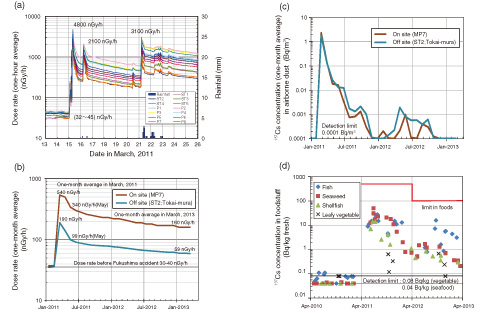
Fig.13-3 Chronological change in dose rate and 137Cs concentration observed in Tokai for two years around 1F accident
Because of the release of radioactive materials during the accident at the TEPCO’s Fukushima Daiichi NPS (1F), an increase in the dose rate and radiocesium concentration were observed in the Nuclear Fuel Cycle Engineering Laboratories (Tokai, Ibaraki Prefecture), which is located about 115 km from 1F, after March 15, 2011. This was reported by the Japan Atomic Energy Agency (JAEA-Review 2011-035). The dose rates (1-h averages) just after the 1F accident are presented in Fig.13-3(a). We report the chronological change in the radiation in Tokai for two years after the 1F accident.
The dose rates (one-month averages) are presented in Fig.13-3(b) for monitoring post-7 (MP7; on site) and monitoring station-2 (ST2; off site) as representative locations. Because of the differences in the environments (e.g., the presence or absence of trees), the observed dose rates varied by a factor of two or three. Because the half-lives of cesium-134 (134Cs) and cesium-137 (137Cs) are about 2 and 30 years, respectively, they contributed most of the dose rate. From May 2011, when the contribution from short-life nuclides almost disappeared, to March 2013, the dose rate decreased by around 60%. Thus, 25% of the 134Cs and 137Cs were transported elsewhere or shielded by immersion, in addition to the decrease by radiological decay (at a rate of 35% in 22 months).
The 137Cs concentrations in airborne dust (one-month averages) also tended to decline (Fig.13-3(c)). The concentration off site is likely to be slightly higher than that on site. The origin of recent 137Cs in airborne dust is believed to be not 1F itself but soil on which 137Cs was deposited two years ago. Outside of the Laboratories, strong winds could resuspend and transport soil particles from cultivated fields.
The 137Cs concentrations in foodstuffs are presented in Fig.13-3(d). Taking into account 134Cs, the concentration of 134Cs plus 137Cs was less than half of the limit in foods (100 Bq/kg fresh for 134Cs plus 137Cs, 500 Bq/kg fresh before April 2012). The 137Cs concentration generally decreased, but the concentration in demersal fish, which could be influenced by 137Cs in seabed sediment, did not decrease as much. Because the transfer of Cs from the soil to vegetables is smaller than that from sea water to seafood, the 137Cs concentration in vegetables was less than 1 Bq/kg fresh.